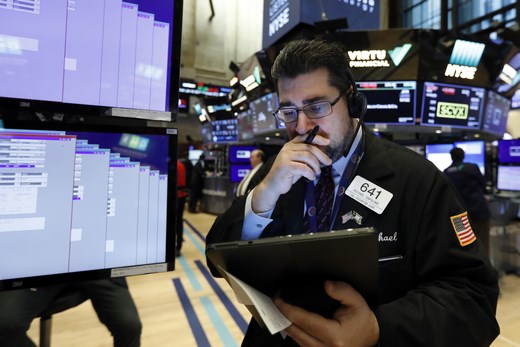TRANSCRIPT
Karin Anderson: Hi, I'm Karin Anderson, associate director for fixed income strategies at Morningstar. I'm here today with Michael Hasenstab, who is the CIO of Global Macro for Franklin Templeton.
Hi, Michael. How are you today?
Michael Hasenstab: Good. Thanks for having me.
Anderson: Thanks for being here. So, just to introduce the Global Bond Fund a little bit, that's your flagship strategy, some of the themes that have been in place for years are shorts on the euro and yen, very big focus on emerging markets bonds and currencies, and very little interest-rate risk. In fact, you've been duration very close to zero lately. And all this stems from your views on inflation and that the market is really underestimating this. So, can you tell us about some of the things that you and your team are seeing that keep your conviction very high?
Hasenstab: Sure. So, as you said, one of the core themes of the strategy is to how to position a bond fund to have positive returns when interest rates go higher and the bond market has a negative return. The conviction we have that that will be one of the most likely scenarios has to do with our macro view that inflation is underappreciated and in fact, the market has focused, certainly throughout most of this year, on the risks of deflation. But specifically, when we look at the U.S., we see that we're at full employment, and we've started to see a tightness in the labor market that will ultimately lead to some wage price pressures. We see robustness in the housing market and the service sector, putting upward pressure on those prices. But importantly, the deflationary impacts of the falling oil price will roll off now that oil has stabilized. So, very quickly, we expect to go from headline inflation that was below 2 to above 2 if not above 3% by the end of this year or early next year, and that isn't runaway inflation, but it's certainly not deflation. And the optimism that people have on buying bonds is largely anchored on deflation risks, and we just think that it could reverse course.
Anderson: So, you think the Fed has got to raise somewhat soon, but what if we go through 2016 and they still haven't moved? That could be a difficult scenario for the strategy in terms of how it's performing. Are there certain investments that you see as picking up some of the slack if that scenario plays out?
Hasenstab: So, I think two things on that. One, the Fed has demonstrated a very accommodative stance and so it is possible that maybe they don't do anything, I think, in the face of inflation and growth trends we see, that would be getting behind the curve. But if they do that and don't hike, and we start to see inflation above 3% on headline and core as well above 2%, the market will then begin to question the Fed, if they are credible or of they are behind the curve, and can reprice the long end even if the short end is anchored. So, I think that's--even if they don't hike, if they don't hike in the face of inflation, that could adjust rates. But if that is the scenario that they don't hike and the policy is accommodative, certainly, we think the opportunities in emerging markets are so extreme in terms of their undervaluation that they will provide some tailwinds. In fact, year-to-date, the euro, the yen, the Treasury trade has been a big headwind for us, but that has been to a good portion offset by the tailwinds that we are getting in places like Brazil or Indonesia or Malaysia.
Anderson: Right. And let's talk about two countries there that you invested in much more heavily in the third quarter sell-off last year, Mexico and Brazil.
Hasenstab: Yeah. So, both represent opportunities in emerging markets but for different reasons. Mexico is a case where the market has traded as if the country is in the worst crisis in their history, worse than the Tequila crisis, worse than the global financial crisis. Yet, Mexico is exhibiting pretty stable growth at 2.5%, pretty stable inflation around 2.5%, has ample internal reserves, does not have a lot of debt, is running orthodox and very prudent policy. We think this is massive mispricing. Fundamentally, good country, priced as if it's in the worst crisis in history and we think that's a mistake.
Brazil is in the worst crisis it's been in since the 1980s. However, the toxic policy mix that got us there, central bank policy was too loose, too much government spending, too much credit extension by the government via the stake banks--those have all come to a close. So, we can see an exit for Brazil because the toxic policies have been stopped and there has been a change in the government, at least temporarily. But it certainly has demonstrated that that regime of the past even if they do stay in power, cannot operate in the same format and that will allow Brazil to regain its potential and just very attractive valuations, some of the highest nominal and real interest rates in the world for a major economy. So, good value in both but for different dynamics.
Anderson: Great. Michael, thanks so much for sharing your insights with us.
Hasenstab: My pleasure.







:quality(80)/cloudfront-us-east-1.images.arcpublishing.com/morningstar/U7P3QP542JCQDEGDSDBKB2BAAE.png)













